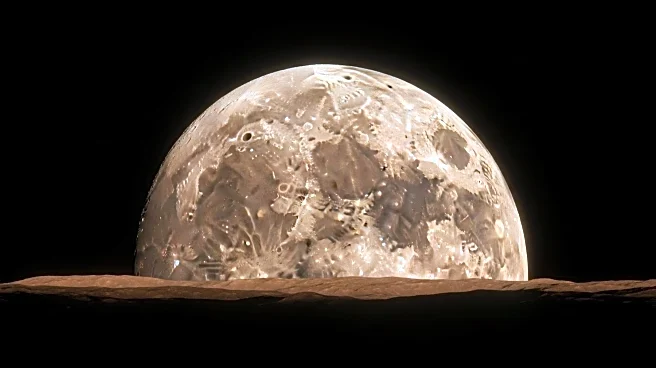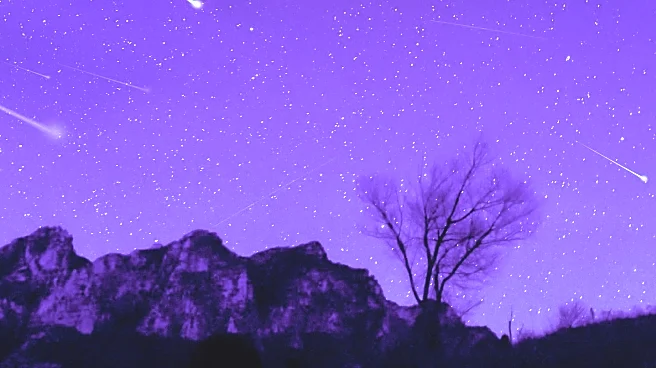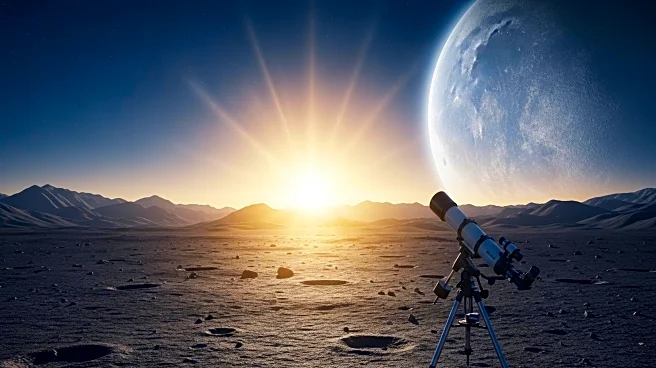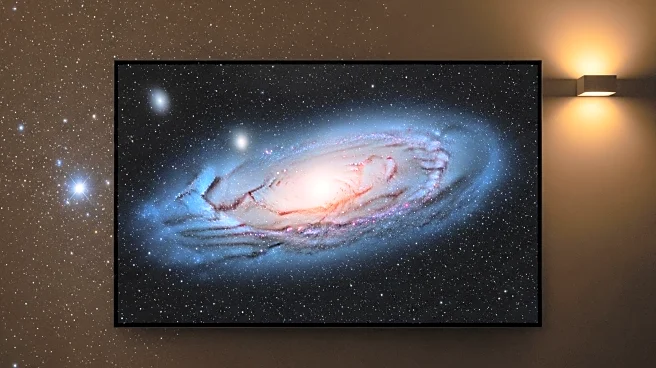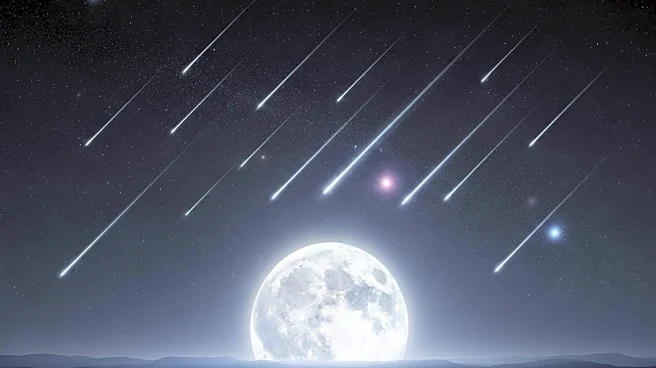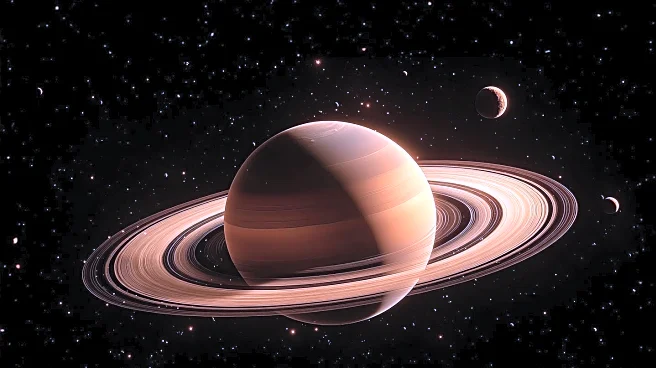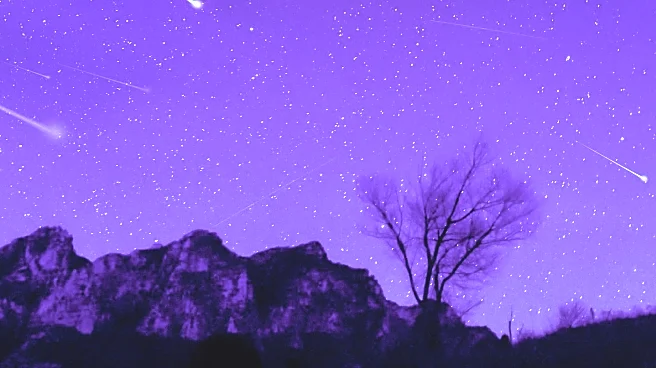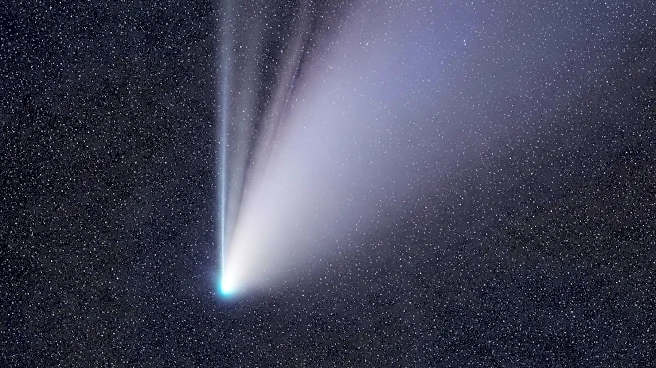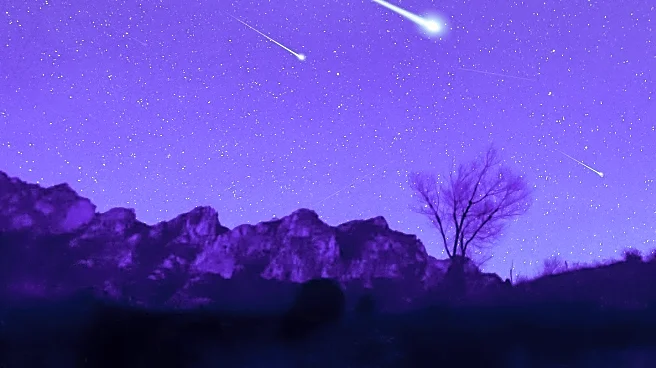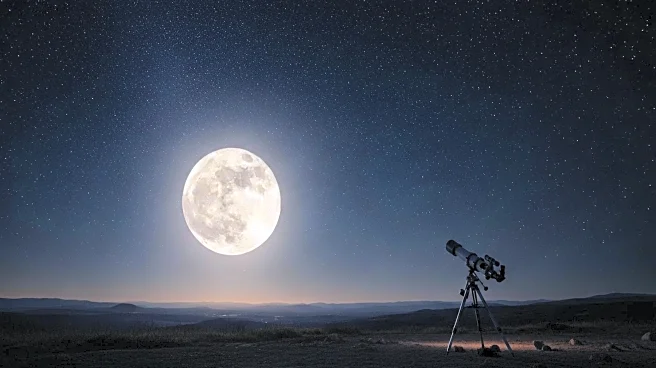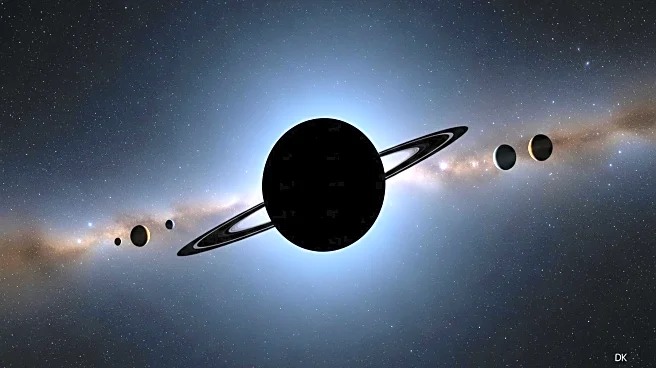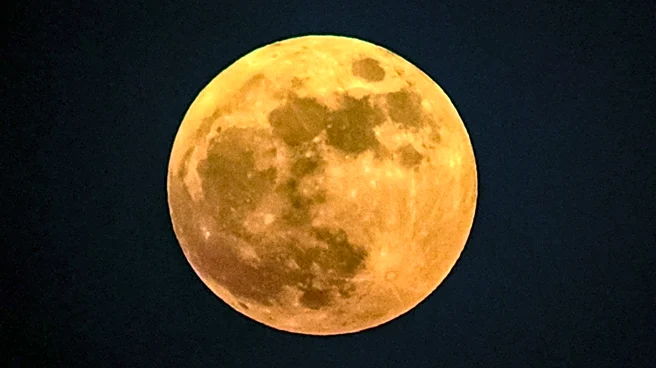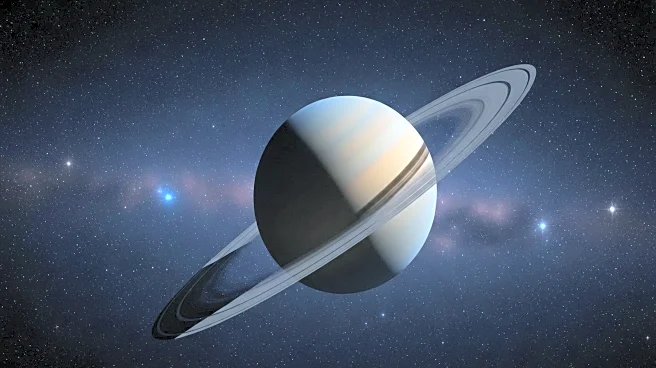What is the story about?
What's Happening?
Astronomy enthusiasts are encouraged to observe the Moon's northwestern craters, J. Herschel and Philolaus, as they catch the sunrise on October 2, 2025. The event offers a unique opportunity to view these contrasting lunar features, with J. Herschel being an older, larger crater with a significantly battered rim, and Philolaus being a younger, smaller crater with a sharper rim. The Moon will be in a waxing gibbous phase, with 76% illumination, providing optimal conditions for viewing. Observers are advised to use a telescope to enhance their viewing experience, as the central peaks of these craters may be difficult to discern with the naked eye.
Why It's Important?
This celestial event is significant for both amateur and professional astronomers as it provides a chance to study the geological history of the Moon. Observing the differences between the older J. Herschel and the younger Philolaus can offer insights into the Moon's formation and the impact history of its surface. Such events also promote public interest in astronomy and can inspire educational activities related to space science. The visibility of these craters during sunrise adds a dynamic element to lunar observation, enhancing the understanding of how sunlight affects the appearance of lunar features.
What's Next?
Following this event, astronomy enthusiasts can look forward to more celestial occurrences throughout October 2025, including the Orionid meteor shower. These events provide ongoing opportunities for observation and study, encouraging continued engagement with astronomy. The changing illumination of the Moon's surface will allow observers to track the evolution of its features over time, offering a deeper appreciation of lunar dynamics.
Beyond the Headlines
The observation of lunar craters at sunrise not only enriches scientific understanding but also fosters a cultural appreciation for celestial phenomena. Such events can inspire artistic interpretations and contribute to a broader public interest in space exploration. The study of lunar features also has implications for future lunar missions, as understanding the Moon's surface is crucial for planning safe landings and exploration activities.
AI Generated Content
Do you find this article useful?
